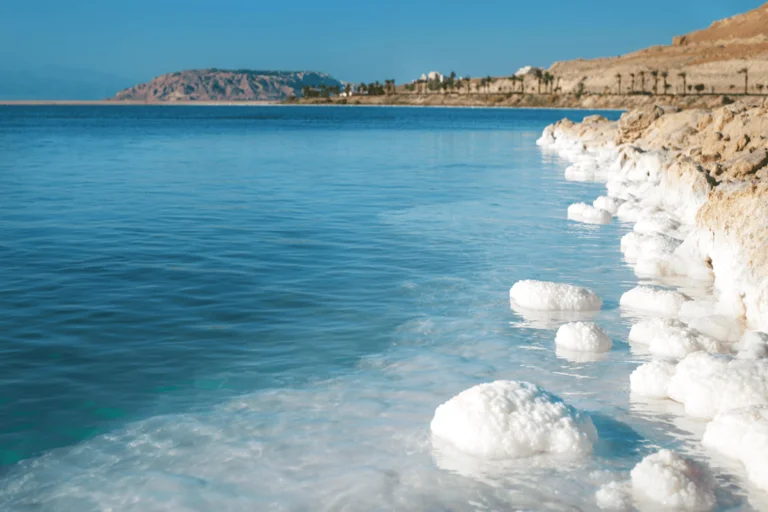
How The Decline Of The Dead Sea Is Impacting Jordanian Farming Communities
The Dead Sea has lost more than 33% of its surface area since the 1960s, and industrial extraction and upstream Jordan River diversion have caused water levels to decrease by more than a meter annually, or over 22 meters since 1970.
Here, How Farmers’ lives are becoming more difficult as a result of the Dead Sea’s decrease:
1.Dangerous Sinkholes Ruining Farms:
Subterranean salt layers are revealed as the shoreline recedes. Salt dissolves and erodes cavities, resulting in abrupt sinkholes up to 50 meters deep, when fresh rainfall pours in. Farmers say they watched their land suddenly crumble.Sinkhole activity in Ghor Al-Haditha has devastated homes, roads, crops, irrigation equipment, and electrical infrastructure.
2.Vanishing Soil and Falling Farm Productivity:
Farmers like Amina al-Huaima and Samir al-Habashna describe the heartache of watching their farmland almost vanish under their feet. Farmers have been forced to drastically cut workforce and agricultural production as a result of certain fields’ drastic shrinking.
3.Water Scarity:
Jordan spends a lot of money transporting water from far-off aquifers, but more than half of that water is lost due to leaks or wrong shipping. About 50% of surface water and 65% of freshwater withdrawals are used for low-value farming, while droughts and insufficient rainfall increase local supplies.
4.Economic Impacts:
- Farmers must give up productive land due to sinkholes, which reduces agricultural yields and results in economic loss.
- In general, Jordan’s economic stability and food security are declining, which affects the farming sector.
- The expense of farming is increased by the need to adjust to environmental changes and shortages of water.
5.Community Despair and Limited Support:
A persistent feeling of abandonment is described by farmers: “We looked for solutions but found none.” A lifelong local farmer claimed, “No one has helped—not even the ministry of environment.”
Why is the Dead Sea called the Dead Sea:
The Dead Sea is a landlocked salt lake in the Middle East that’s virtually lifeless. The Dead Sea’s eastern shores belong to Jordan, while the southern and western portions belong to Israel. The northern half of the western shore is located within the West Bank. Today, the Dead Sea is a popular tourist destination and source of water for commercial applications.
How did the Dead Sea get so salty?
The Jordan River provides the majority of the water for the Dead Sea, which is located in an outletless desert basin. However, due to the high rates of evaporation caused by the arid climate, the water loses more than it gains, leaving behind salts and dissolved minerals, making the Dead Sea one of the saltiest bodies of water on Earth. The Dead Sea is rapidly drying up and shrinking by more than one meter every year.
Many farmers’ livelihoods are disappearing along with the Dead Sea, as well as nothing is done, it may only be remembered in history books.
For More Article>https://www.climatechallange.com/how-the-worlds-fourth-largest-lake-became-a-deadly-desert/